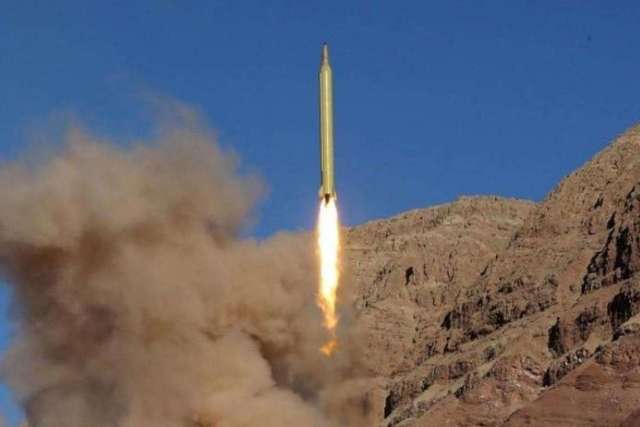We conclude our consideration of the topic of Iran's ballistic missiles. In previous publications: the first part of the material is devoted to a brief history of the formation of the Iranian missile strategy, the second describes the composition of the missile sector in the defense industry of the Islamic Republic of Iran (IRI), the third tells about ballistic missiles (BR) on liquid fuel, the fourth gives an idea of Iranian BR on solid fuel. This article presents the views of experts on the possibility of the Iranians creating a BR with a nuclear warhead (warhead) and the prospects for the construction of intercontinental ballistic missiles (ICBMs).
Iran's ballistic missiles with a nuclear warhead
As you know, the Missile Technology Control Regime (MTCR) developed an international standard in 1987 that defines the ability of BR to carry a nuclear charge. According to the RCTR, this class of missiles includes products capable of delivering 500 kg of payload at a range of 300 km or more. According to IISS experts, at least eight of Iran's current ballistic missile systems exceed this threshold and are thus considered nuclear (capable of carrying a nuclear charge).
In July 2015, the UN Security Council drafted a new resolution accompanying the nuclear agreement signed with Tehran in the same month. At the same time, China and Russia used their veto power to change the wording of the previous sanctions resolution, which prohibited Iran from any activities related to BRS suitable for the delivery of nuclear weapons (nuclear weapons). The 2015 resolution "calls for" (which is not a mandatory requirement) Iran will not participate in activities related to BRS "designed for" the delivery of nuclear weapons, "including launches using such BR technology." This warning expires no later than October 2023.
Exactly what it means to be "designed for" is not defined. France, the United Kingdom and the United States interpret this in accordance with the wording of the MTCR. China, Iran and Russia argue that the BR should be specially designed to deliver a nuclear charge, regardless of its range and payload (that is, the question of "being designed" is considered from a more technical point of view).
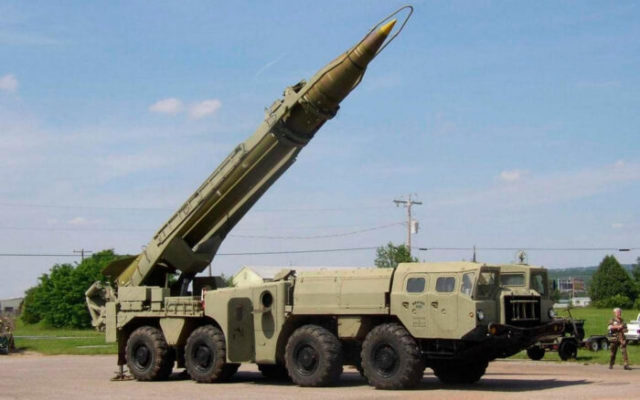
Soviet BR 9K72 "Elbrus"
Iran's short-range ballistic missiles "Shehab-1" and "Shehab-2" exceed the limits of the MTCR and were developed on the basis of the Soviet Scud (Elbrus) designed to deliver nuclear weapons. Whether North Korean prototypes of Iranian BRS are actually suitable for this purpose is unknown.
According to the calculations of Western experts, at present the warheads placed on the Gadr-1, Sajil and Kiam-1 BR are probably not specifically designed to deliver nuclear charges, which Iran may be developing. Their narrow nose fairings cannot accommodate the 585 mm diameter nuclear munition depicted in the Iranian files that Israel showed in April 2018.
These files included charge diagrams inside the nose of the Shehaba-3 BR, which, therefore, is clearly intended for the delivery of nuclear weapons. This conclusion is also confirmed by the North Korean origin of the Shehab-3. However, the Gadr-1 and Sajil BRS have the same diameter as the Shehab-3, and, therefore, can carry the same nuclear warhead, although not at the same ranges. Similarly, "Kiam-1" can carry the same warhead as "Shehab-2". If North Korea had developed and intended Scud-C for the delivery of nuclear weapons, then Kiam-1 – like Shehab-2 – would have met the "designed for" standard.
A variant of the Gadr missile is the Imad medium-range ballistic missile (BRSD), and by its origin it can be said that it was not developed for nuclear weapons. At the same time, the Imad has a head part of unclear dimensions, which accommodates an advanced guidance and control system and is able to accommodate the design of a nuclear charge associated with the Shehab-3. In addition, the Imad has the same diameter as the Shehab-3, therefore, it can carry the same nuclear-associated warhead. As a result, experts find it difficult to unambiguously determine its status relative to the "designed for" parameter.
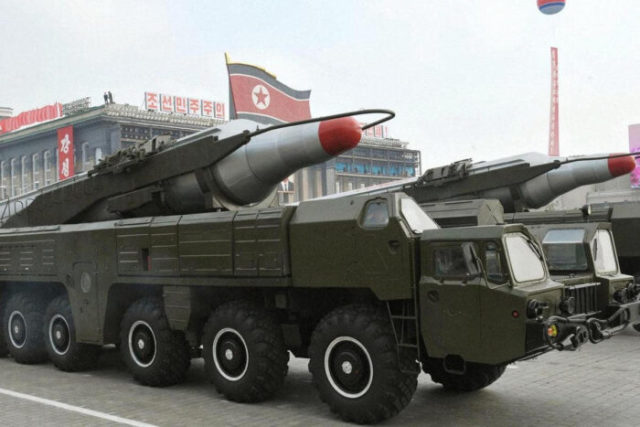
North Korean BR "Musudan"
Probably, the Iranian Khorramshahr BRSD was also designed for the delivery of nuclear weapons, since it apparently used the North Korean Musudan as a prototype. The latter was developed on the basis of the Soviet R-27 missile (designed for installation on submarines and delivery of nuclear weapons).
It is noted that the Iranian space launch vehicles - "Safir", "Simorg", "Kased" and "Zolyanakh" – are optimized for launching satellites. They have not been tested as BR and will require modification for such use. Therefore, it is difficult to say that they are designed to deliver nuclear weapons.
Possible paths to an Iranian ICBM
Local solid fuel production capabilities
Iran demonstrated a significant technological breakthrough on February 1, 2021, when Iranian state television published footage of the test launch of a new three-stage carrier rocket "Zoljanah" (Zoljanah). The carrier had solid-fuel engines with a diameter of 1.5 m on the first and second stages and a liquid engine of the third stage. According to the Government of Iran, the 25.5 m long rocket makes it possible to launch a 220 kg payload into orbit at an altitude of 500 km above the Earth. Analysis of satellite images of the Iranian territory showed that the test launch took place between October 21 and December 12, 2020 at the cosmodrome named after him. Imam Khomeini.
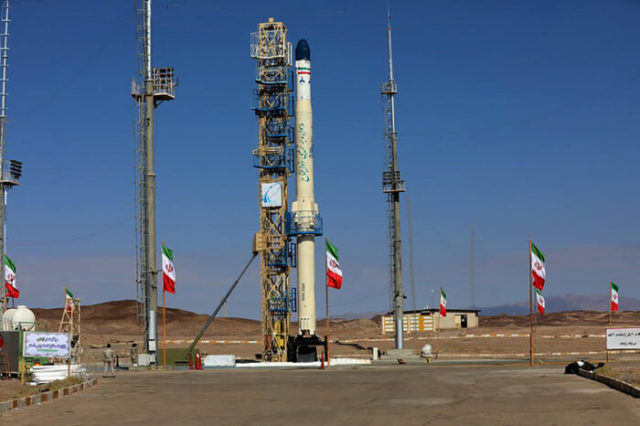
The launch vehicle "Zoldzhanakh" at the start
According to IISS analysts, the successful development of a solid-fuel engine with a diameter of 1.5 m for the Zoljanah launch vehicle, combined with other IRGC efforts to develop large solid-fuel rocket engines, opens up a potential path for Tehran to create an ICBM. The facility where the engine was probably produced (near Shahroud) is equipped to produce only a few engines per year, which corresponds to the ambitious IRI satellite program, but not enough for the ICBM program. The plant could be repurposed to produce boosters for long-range missiles, although the full development of a new large solid-fuel engine powerful enough to propel ICBMs will take some time.
Khorramshahr BR with R-27 technology
Western observers are concerned about the flight tests of the Iranian Khorramshahr BRSD, since it is highly likely to use an engine developed for the Soviet BR submarines R-27 (SS-N-6), with a high-energy potential of a combination of NDMG and nitrogen tetroxide. If Tehran gets access to a sufficient number of engines for the P-27, it will be able to design and manufacture an arsenal of the Khorramshahr BR with lighter warheads than the current model, but capable of delivering 500 kg of payload at a range of up to 3000 km.
In the case of mastering the technology of engine production, Iran will also be able to use them as building blocks for a multi-stage ICBM similar to the Hwasong long-range models (Hwasong-13/Mod.2; KN-08/14), which North Korea exhibited in Pyongyang in 2012 and 2015, but never tested. Although there are currently no signs of Tehran having such plans, the situation may change if the country's leadership decides that the need for an ICBM has arisen.
RD-250 technology
Korean BR "Hwasong-14/15", successfully tested in 2017 as the equivalent of intercontinental ranges. For the first stage, they used a modified version of the RD-250 engine developed by the V.P. Glushko Energomash Design Bureau and built in the 1960s at the Ukrainian Yuzhmash. The engine develops a thrust of 80 tons. It is also notable for the fact that in 2016 the US Treasury Department published a notification of sanctions concerning Iran's work on the North Korean "80-ton rocket accelerator". It is believed that if Iran does acquire this technology from North Korea, it will be able to develop an ICBM with a range of 12,000 km, similar to the Hwasong-15.
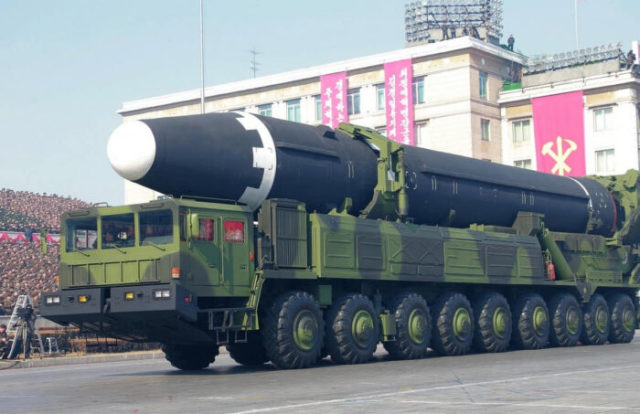
Hwasong-15 missile system
Thus, Iran's almost 30-year efforts in the field of BR give an idea of the strategic role of this type of weapons in the country's defense policy. The process began with a rapid build-up of stocks due to purchases on the market and the parallel creation of an assembly-oriented production infrastructure. At the same time, thanks to technological cooperation with individual foreign partners, it was possible to train specialists, acquire critical subsystems and components, and form production potential. After this incubation phase, in the second half of the 1990s, the country began to develop its own samples. As a result, at the end of the 1990s, it was possible to make a significant leap, both in terms of quantity and productivity.
The achievements of the last decade under the Shehab-3 and Gadr-1 liquid BR programs show that Iran has formed a certain research potential that contributes to the evolutionary development of this class of BR, although this progress is still supported by foreign technical assistance. The development of Iran's liquid-fueled ballistic missile production indicates that Tehran will continue to rely on these missile systems for medium-range strikes and will seek to use this technology as part of its space research program.
At the same time, the country's long-term priorities in the field of rocket technology, due to the internal operational limitations of liquid fuel systems and the desire to achieve self-sufficiency in rocket engineering, force the leadership of Iran to focus on solid fuel BR, in the development of which notable successes have also been demonstrated.
In the foreseeable future, Iran is likely to focus on improving accuracy, rather than increasing the range of its BR beyond 2000 km. This emphasis on accuracy, combined with the transition to solid fuel, is most clearly demonstrated by the dynamics of the development of the Fateh BR family, which has increased over the past four years by three new models: Zulfikar, Dezful and Shahid Hajj Kasem.
However, according to experts, if the development and practical testing of the Khorramshahr BRSD continues, this may indicate a change in Iran's intentions, since this system is capable of covering 2,000 km, depending on the payload weight. In addition, Tehran may also choose other ways, up to the development of an ICBM.
Based on the materials of the resources: iiss.org, missilethreat.csis.org, iranprimer.usip.org
